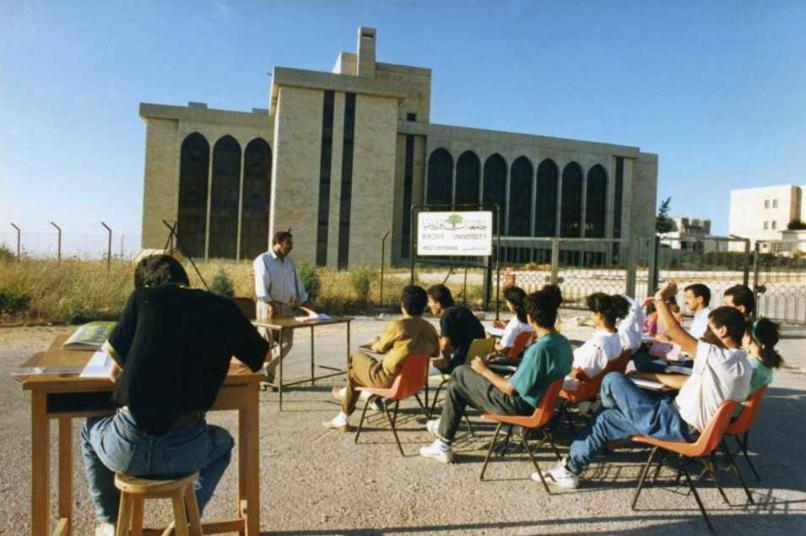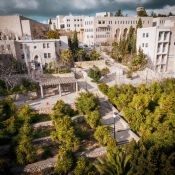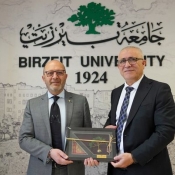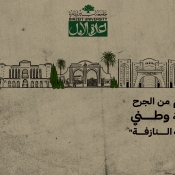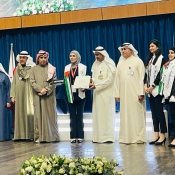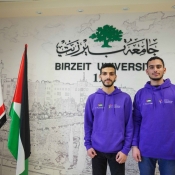Remembering the First Intifada: Running Birzeit University during the Intifada
Thirty-one years ago, on December 8, 1987, the First Intifada broke out in Palestine after hundreds of Palestinians witnessed the killing of four men when they were run down by an Israeli jeep outside Jabalya refugee camp in Gaza. The First Intifada was an uprising that lasted for over five years, and witnessed the deaths of thousands of Palestinians.
The Intifada, which ended in 1993 after the signing of the Oslo Accords, came at a critical time in an era of growth for Birzeit University. The university was moving from the old to the new campus and working very hard to upgrade its academic programs and provide the best educational tools to support the national liberation cause. The university also had to deal with closures of its campus by the Israeli occupation three times, for a total of over four months, in 1987. These closures provided an insight into the occupation’s apprehensions regarding higher education in Palestine.
Nevertheless, Chairman of the Board of Trustees Hanna Nasir stressed that the students and faculty continued “to interact as an ‘underground’ system in which education was provided in homes and rented facilities, providing yet another example of how the academic Palestinian community faced the challenge in a creative and peaceful manner.” – See: Birzeit University: The Story of a National Institution
On that point, BZU alumIbtisam Barakat ‘86 says:
“Two months passed without classes. I read my science books and learned little beyond what I had known in high school. The chemistry, physics, and all of the complex equations were as complex as my feelings trying to predict the future of my education. How would we finish the semester? Some of the teachers and students snuck into campus pretending that they needed to get this or that item from their offices, and taught a few things in the hallways to students who followed them. Some met on the streets, in homes, at coffee houses, but it was difficult to grasp it all.” Birzeit University: The Story of a National Institution
Faculty members were also targeted by the Israeli occupation. Many were placed under administrative detention, which meant that they were arrested for six-month intervals without charges, and the term could be renewed indefinitely. The late Birzeit University physics instructor Tayseer Arouri was held under these military regulations for a total of forty-five months between 1974-1988.
Arouri commented on this experience:
“Among the worst things about my detention was the severe overcrowding in a way that is hard for anyone who has not experienced it to imagine. I was held in room number 1 in Ramallah prison, a room that was 30 square meters (6 X 5), and there were sixty-three prisoners. This lasted for several weeks. But during my detention, I read slightly more than 200 books. I learned a lot during this period, and I learned a lot from prison life itself (…) Solidarity campaigns were launched to denounce my detention, and these campaigns were much larger than the previous time. Participants included intellectuals, scientists, union leaders, politicians, and legal and trade organizations from many countries.” Birzeit University: The Story of a National Institution
The Israeli occupation’s violations and outrageous acts did not only include Palestinian instructors, but also internationals. They issued Military Order 854, which places institutions of higher education, including control over enrollment and staff appointments, under the command of the Israeli governor.
The end of the intifada did not stop all of these practices. Birzeit University continues to be part of the national anti-colonial liberation movement, and the struggle for Palestinian freedom continues.

